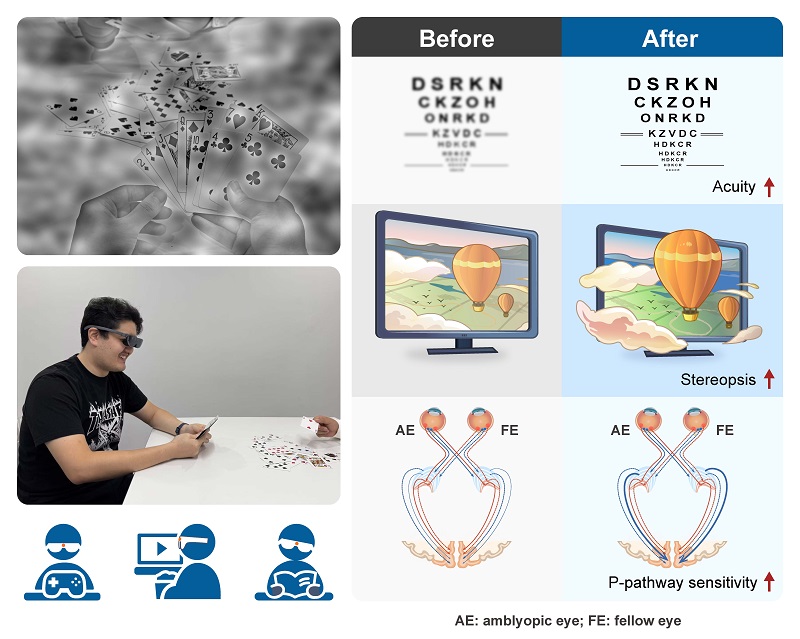Scientists Developed a New AR Technology that Boosts Vision in Adults with Amblyopia
In a study published in Advanced Science on April 7, 2025, Dr. ZHANG Peng's group from the Institute of Biophysics of the Chinese Academy of Sciences, along with Dr. WEN Wen's group at Institutes of Brain Science, Fudan University, have developed an innovative altered reality (AR) training method that significantly improves visual function in adults with amblyopia.
Human visual function relies on the efficient information processing of parallel visual pathways. The magnocellular (M) pathway processes motion and coarse visual information, while the parvocellular (P) pathway is responsible for processing color and fine spatial details. Selective impairments in these pathways are associated with various neurodevelopmental and neurodegenerative disorders. Traditional visual training methods face limitations such as poor generalization of training effects and low patient compliance, making them difficult to widely adopt in clinical practice.
In this study, the AR system captures natural scene videos using high-definition cameras, processes them in real time via GPU, and displays the modified images through OLED head-mounted displays.
To specifically enhance the function of the P pathway, the system disrupts the phase of low spatial frequency (SF) information, turning it into rapidly flickering noise, while preserving high SF details. Furthermore, by reducing the signal-to-noise ratio of high-frequency information in the dominant eye, the system enhances the contribution of the non-dominant eye in the P pathway.
The study found that short-term AR training significantly improved visual acuity and high SF sensitivity in healthy participants, restoring binocular balance with long-lasting effects. After one week of home-based training with lightweight AR glasses, patients with amblyopia showed significant improvements in visual acuity, eye dominance, and stereoscopic vision in the amblyopic eye, with high compliance.
This innovative augmented reality training technology enables selective visual pathway interventions in everyday settings, providing substantial and lasting improvements in visual function for both healthy adults and patients with amblyopia. It offers a promising new solution for the rehabilitation of visual disorders such as amblyopia, glaucoma, and developmental dyslexia, while also holding great potential for enhancing visual performance in the general population.

Figure. AR visual training significantly improves visual acuity, stereoscopic vision, and parvocellular pathway sensitivity in adults.
(Image by ZHANG Peng's group)
Article link: https://doi.org/10.1002/advs.202415877
Contact: ZHANG Peng
Institute of Biophysics, Chinese Academy of Sciences
Beijing 100101, China
E-mail: zhangpeng@ibp.ac.cn
(Reported by Prof. ZHANG Peng's group)

